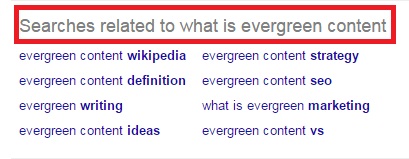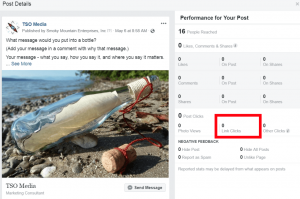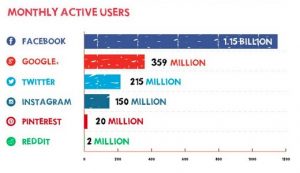
Here’s a fact:
SEO is effective – and it will always be, no matter how many updates search engines cook up. But the sad truth is, results usually take a while. In many cases, you won’t see noticeable changes until after six months or more. For those who are serious on investing in this strategy for the long-term, a campaign of one year or more is recommended. Still, digital marketers everywhere are constantly being pressured for quick results.
As a dedicated SEO specialist, how do you deliver noticeable progress in less than six months?
Don’t just use one method at a time – pair them with other equally effective strategies to boost rankings and impress your clients. Here are four techniques to help you get started.
1. Fix structured data markup errors AND other on-page elements.
After performing an audit, you have probably encountered several opportunities, such as non-optimized on-page elements on your client’s website. Work with your web developer to tackle these issues one by one. On-page SEO factors like meta tags or page titles for instance, improve a site’s performance and helps search engines crawl pages faster. Other things to watch out for are broken links (404), the sitemap, H-tags, meta descriptions, and page speed.

Another factor to consider is the site’s structured data. Fixing errors with structured data markup will allow Google to properly crawl its pages. In turn, the pages could be eligible for enhanced presentation on search results through features like Rich Snippets, Breadcrumbs, or a Sitelinks Search Box. This means better promotion of content. Once you’re done optimizing these elements, you’ll see that it’s easier for search engines AND people to find your client’s website.
2. Natural language queries WITH long-form content.
Believe it or not – depending on the industry and target audience – people really DO like long content. In fact, according to Search Engine Land, content with 2,000 words or more not only performed better on search results, it also got the most clicks. Why is this so?
- It provides more opportunity for keywords.
- It usually contains detailed information on particular topics.
- It performs better on social media.
But before you begin churning out long-form content on your client’s blog, remember that it’s always about QUALITY. Instead of simple implementing this trick because you want to rank, do it because a) you want to offer in-depth information on a subject OR b) you’d like to be an authority in your industry.
Don’t forget: search engines like Google have hundreds if not thousands of ranking signals. Long-form content is just one of them. In order to truly amp up your chances, add value to your long-form content by including natural queries.

According to Oracle, natural language query are terms in a user’s own language. Examples would be “how” or “what” questions. Aside from semantic keywords, sprinkling these into your content helps search engines identify it as being relevant to particular queries. Use Google’s Keyword Planner to find keyword ideas OR simply take advantage of “related searches” to view ideas you can add into your content.

Word of warning: make sure you’re only inserting appropriate natural language queries in your pages. NEVER add anything unrelated to your subject or industry!
3. Guest posting WITH strategic social media sharing.
You’ve most likely read the “death of guest blogging” as written by Matt Cutts himself. But here’s the thing: it’s not really dead – it just evolved.
Louis Gudema of revenue + associates can attest to this on his article. He states that guest posting for the WRONG reasons (like trying to earn links) is of course, a bad idea. But if you have good intentions (like genuinely wanting to share your expertise), you’re likely to succeed in this endeavor. Gudema’s own experience proves that if you provide amazing, high-quality content to your partner editors, guest blogging is an effective SEO tactic that’s sure to bring in fruitful results.

You can’t just stop at guest posting though. Assuming you already have a few high-authority websites accept your content, your next step is to strategically promote it on social media. The key term here is “strategic” because you can’t just blast it whenever you see fit. Content calendar service CoSchedule has a great guide that should help you figure out the best times to post on popular platforms, like Twitter.

Image credits to CoSchedule
Use your online tools of choice to schedule your posts accordingly to get the most out of guest posting.
4. Repurposing popular content AND influencer outreach.
Links are still the lifeblood of search engine optimization. But guest posting and social media sharing alone is NOT going to hasten the results that your client is looking for. Not to mention that it can be a time-consuming task if you’re a small firm. So how do you get good links yet still provide value?
If you already have a collection of excellent content (i.e. guest post articles), you can repurpose them for redistribution to other relevant sites. Repurposing content has other benefits aside from getting you links. These include:
- Breathing new life to old content
- Reaching a wider audience
- Saves time and effort in content marketing
Once you’re ready to begin, decide HOW you want to repurpose your content. Choose from ideas ranging from infographics, white papers, podcasts, video webinars, email series, or an ebook. Next, make a list of target sites to publish your re-purposed content in. Two great platforms for repurposed content are Visual.ly (for visual-related pieces) and SlideShare (for presentations).

However, your aim is to produce noticeable improvement for your clients before six months. Although repurposing content is a great strategy, on its own, it’s not enough. Here’s where Influencers can help you out.
First, identify Influencers in your niche. These could be journalists, PR personnel, or bloggers. Profile them: who are they, what they like to read, how many followers they have in each platform, etc. Create your own database to keep track of your connection with each individual.
Second, be visible in their radar. Share their posts, comment on their published pieces, or send them a “thank you” email for their wonderful work. By developing rapport with Influencers initially, you show that you’re genuinely interested in them as well. This could lead to long-term connections if nurtured properly.
Third, once you sense that they’re ready for your pitch, tell them about what you’ve been working on. Highlight why they might like your content and how it would benefit them.
Influencer outreach may feel like a daunting task at first. But don’t get de-motivated if you receive a rejection. It’s only natural and it’s all the more reason for you to pursue them. What’s important is to treat them as valuable partners in your endeavor – not just people you approach because you need a favor.
Final Words
Whether you want to prove you’re the best in the business, or you simply want to reduce some pressure off your shoulders, combining strategies helps you achieve more by doing less. So what are you waiting for? When it comes to SEO, time is of the essence. Impress your client – and yourself – by implementing smart strategies to see results in a shorter amount of time.
Digital & Social Articles on Business 2 Community(61)
Report Post








